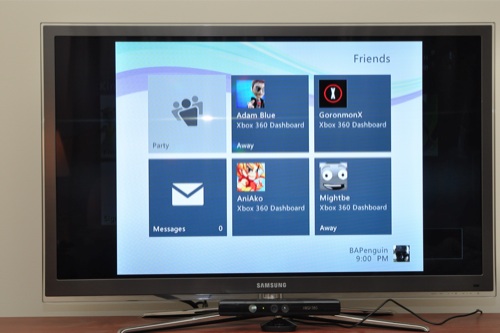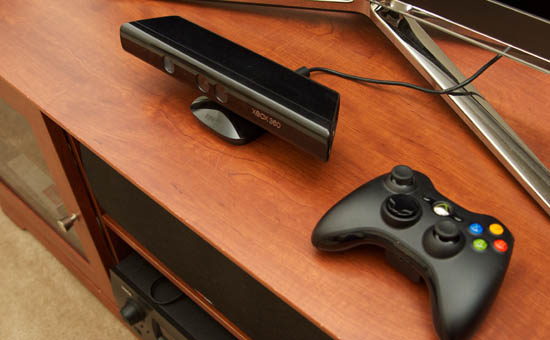Motion control gaming - Nintendo created it, Sony copied it, and Microsoft is expanding it. Kinect is here, Microsoft’s motion and voice control camera that is set to revolutionize the way we play games, or at least, free us from the waggle wand. Microsoft have set out on a bold campaign to bring in many of the same non-gamers that the Wii did. You don’t hear about the Wii much anymore from your soccer moms, your senior citizens, or the mailman - most of grown tired or bored and moved on. But the Kinect, with appearances on Ellen, Oprah, and the Home Shopping network - that’s gotten them all riled up again.
It’s long, it’s thick, and black....
The first thing I think most folks will be surprised with is the size of Kinect, at about 8 inches long and weighing a pound or so, it's a truly beefy camera. It sits above or below your TV and uses a built in motor to determine its playing area and track your body. The first time you fire up the Kinect you’ll need to run a few tests to calibrate the microphone and such. You may also want to run the Kinect ID application which allows the console to recognize you when you step into the field of view. We had a few issues with getting it to work under different conditions, but 9 times out of 10 the Kinect easily recognized each players when they walked on camera.

Navigating the dashboard with Kinect is accomplished in two ways. The first is using your hands as control objects - ala Minority Report. The reality of it is, it doesn’t behave this way at all. Navigation becomes a slow and cumbersome experience as confirming selections and sliding panels take time - 2-3 seconds of hovering over an item. Why 3-dimensional space wasn’t used for confirmation is beyond me - I should be able to just reach out and “grab” the button to press it instead of holding my hand still in the air for 3 seconds. The sliding between tabs also must be done “just right” and is error prone.

Because of the oversized nature of a lot of the Kinect interfaces, you can only fit so much data on the screen - this means long friends lists and achievement lists require a lot of the painful process of scrolling between panels. Another oddity here are the panels are a 4:3 resolution instead of 16:9.
Ok, so navigating with your hands is a novelty - thankfully the voice commands work pretty well. You can easily start a game, launch your friends list (the Kinect one) and dozens of other commands just by speaking with your natural voice. Saying “Xbox Launch Disc” saved me numerous times while I was hunting for controller before playing.
Whatever you do, don’t open your eyes...
One other minor gripe I have about the Kinect is the IR sensor on it. This little eye is always on, even if you aren’t playing a Kinect game, so depending on where you sit relative to the sensor it’s shining in your eyes. It’s quite the distraction, so much so, I keep the Kinect turned off to the side of my TV stand. One thing to remember - when setting up the Kinect you have the option to use it as a microphone for gaming - if you do that it takes the place of your XBL headset so people will hear you chat.
You also are going to need a pretty big playing space for Kinect - my living room is exactly 8 feet from the front of the TV stand to the front of the couch and it’s just barely enough room to play distance wise. In numerous games my hands would go out of frame if I needed to raise them above my head. Add in a second person for co-op play and you get an almost claustrophobic feeling trying to squeeze both players into view.

My living room is small by no means, but we were still "crowded" while playing Kinect.
